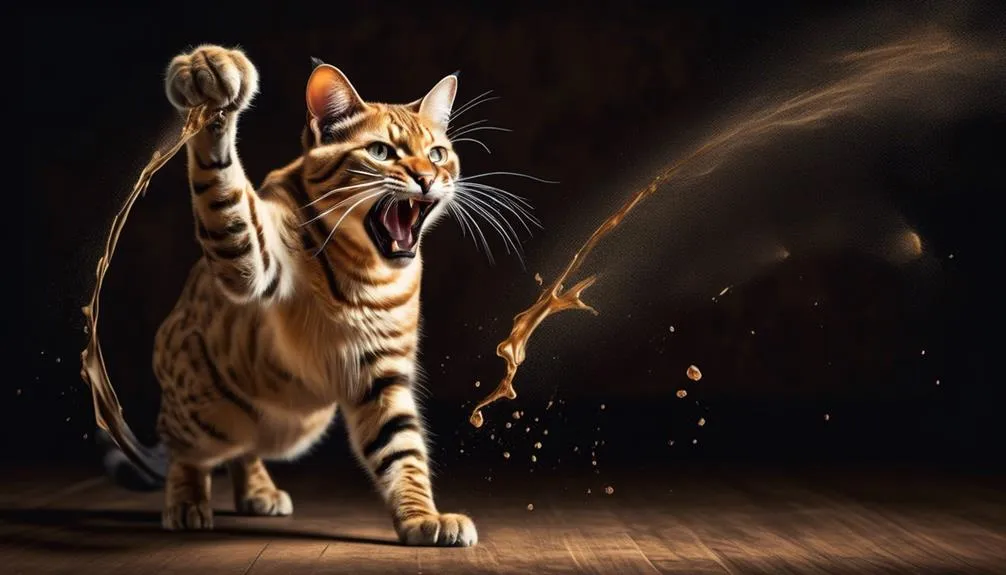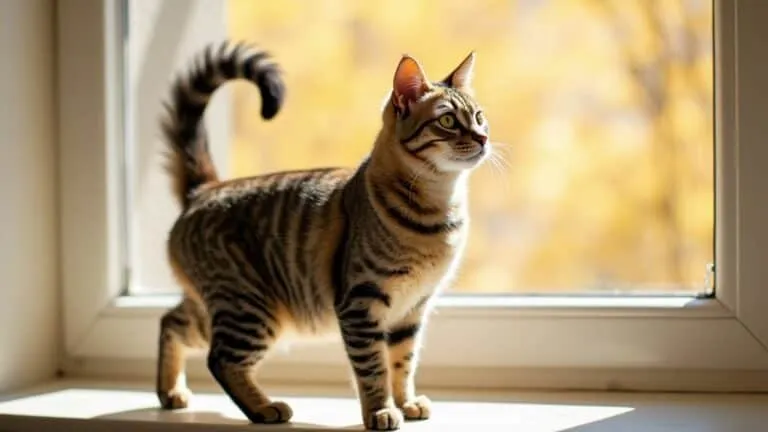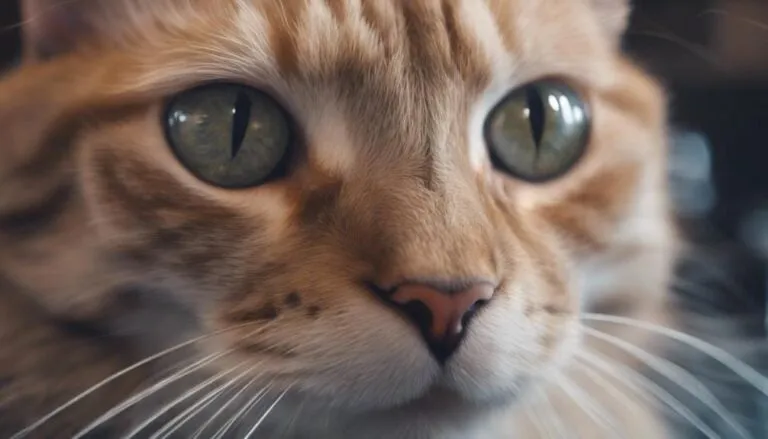The Best Fluffy Pancakes recipe you will fall in love with. Full of tips and tricks to help you make the best pancakes.

Have you ever watched in awe as your cat swatted at a moving toy, displaying an impressive level of precision and agility? It's fascinating to witness their innate ability to bat at objects with such ease.
But have you ever wondered why they do it? What drives this behavior that seems to be ingrained in their instincts?
In this discussion, we will shed light on the secrets behind feline batting behavior, uncovering the underlying motivations and shedding light on the fascinating world of our feline friends.
Prepare to be amazed as we unravel the mysteries behind this captivating behavior and gain a deeper understanding of our beloved cats.
Key Takeaways
- Cats bat at things as a form of play and to engage in feline play behavior.
- Batting allows cats to safely interact with unfamiliar objects or animals and explore the world around them.
- Attention from owners, whether positive or negative, can reinforce and encourage batting behavior in cats.
- Batting is an instinctual behavior deeply rooted in cats and is an important part of their hunting process.
Reasons for Batting Behavior
One of the main reasons cats engage in batting behavior is to play and satisfy their feline instincts. Batting allows them to simulate the hunting process and release their energy. It's a critical part of their hunting behavior and helps them assert themselves without fear.
Batting also serves as a safe way for cats to interact with unfamiliar objects or animals, allowing them to explore the world and gather information. This behavior is deeply rooted in cats' genetics, with male cats more likely to use their left paw and female cats more likely to be right paw dominant.
Attention and Reinforcement
To further understand the reasons behind a cat's batting behavior, it's important to explore the role of attention and reinforcement in shaping this feline instinct.
Here are three key points about attention and reinforcement in relation to a cat's batting behavior:
- Positive reinforcement: Cats learn that batting things gets their owner's attention. When owners respond positively, such as by playing with the cat or giving it treats, it reinforces the batting behavior.
- Negative reinforcement: Attention, whether positive or negative, reinforces the batting behavior. Even if owners react with scolding or punishment, the cat still receives attention, which can motivate it to continue batting.
- Unintentional encouragement: Owners unknowingly encourage batting behavior by reacting to it. Cats quickly learn that batting something will elicit a response, whether it's excitement, laughter, or even frustration. This unintentional reinforcement can reinforce the behavior and make it more likely to occur in the future.
Understanding the role of attention and reinforcement provides insight into why cats engage in batting behavior and how owners can effectively shape their cats' behavior through positive reinforcement techniques.
Paw Dominance and Importance
Paw dominance plays a significant role in a cat's batting behavior. Male cats are more likely to use their left paw, while female cats are more likely to be right paw dominant.
This feline paw dominance has important implications for understanding the significance of batting behavior in cats. Batting at objects is one of the earliest forms of play for cats and helps simulate their hunting process. It is a critical part of their hunting behavior, allowing them to practice their stalking and capturing skills.
Additionally, batting at toys can help cats release their energy and provide them with exercise. Understanding the importance of paw dominance in batting behavior can help cat owners better engage their pets in play and provide them with the mental and physical stimulation they need.
Motivation for Batting
Cats are motivated to bat at things for a variety of reasons, including play, exercise, stress relief, and territorial marking. Understanding their motivations can help us better serve our feline friends. Here are the key motivations behind a cat's batting behavior:
- Exercise benefits: Cats are natural hunters, and batting at objects helps them simulate their hunting process. It allows them to release pent-up energy and maintain their physical fitness.
- Territorial marking: Some cats may bat at objects to mark their territory. By leaving their scent on the object, they're communicating to other cats that this space belongs to them.
- Stress relief: Cats may also bat at things as a way to relieve stress or boredom. It can be a soothing and calming activity, helping them cope with anxiety or excess energy.
Other Cat Behaviors
As we explore the fascinating world of feline behavior, it's essential to understand that cats possess a wide range of behaviors beyond their innate propensity for batting at objects.
One common behavior that many cat owners encounter is scratching. Cats scratch to mark their territory, stretch their muscles, and remove the outer layer of their claws. Providing appropriate scratching surfaces, such as scratching posts or boards, can help redirect this behavior and protect your furniture.
Another important aspect of understanding cat behavior is decoding their body language. A cat's tail, ears, and eyes can provide valuable information about their mood and intentions. For example, a raised tail signifies a friendly and confident cat, while a low tail suggests fear or aggression. Similarly, flattened ears indicate discomfort or aggression, while dilated pupils may indicate excitement or fear.
Additional Cat Topics
One intriguing aspect of understanding cats is exploring their unique preferences and behaviors, including their fascination with rubber bands and hair ties. Cats are known for their playful nature and their curiosity towards objects that move. Here are three reasons why cats have an affinity for rubber bands and hair ties:
- Sensory stimulation: The elasticity and texture of rubber bands and hair ties provide cats with tactile and auditory stimulation, which can be highly engaging for them.
- Hunting instincts: Cats are natural hunters, and these small, movable objects mimic prey, triggering their instinct to chase and bat at them.
- Interactive play: Rubber bands and hair ties can be easily batted around, allowing cats to engage in interactive play, which helps them release energy, exercise, and alleviate boredom.
Understanding these preferences can help cat owners provide appropriate toys and outlets for their cats to engage in their natural behaviors. However, it's important to supervise playtime and ensure that these objects are used safely to prevent any potential harm to the cats.
Conclusion
In conclusion, the feline batting behavior is a fascinating aspect of our cats' instinctual nature.
Through the exploration of their hunting instincts, attention and reinforcement, paw dominance, and the benefits for their well-being, we've gained a deeper understanding of why cats love to bat at things.
This playful behavior serves a greater purpose in their physical and mental stimulation.
So, next time you witness your cat's agile paw in action, marvel at the mesmerizing mysteries behind their secret world of feline batting behavior.








